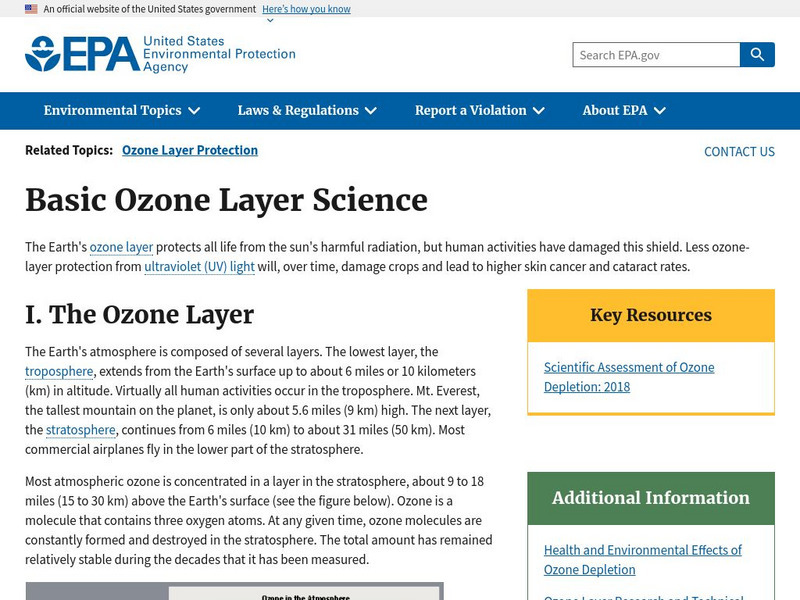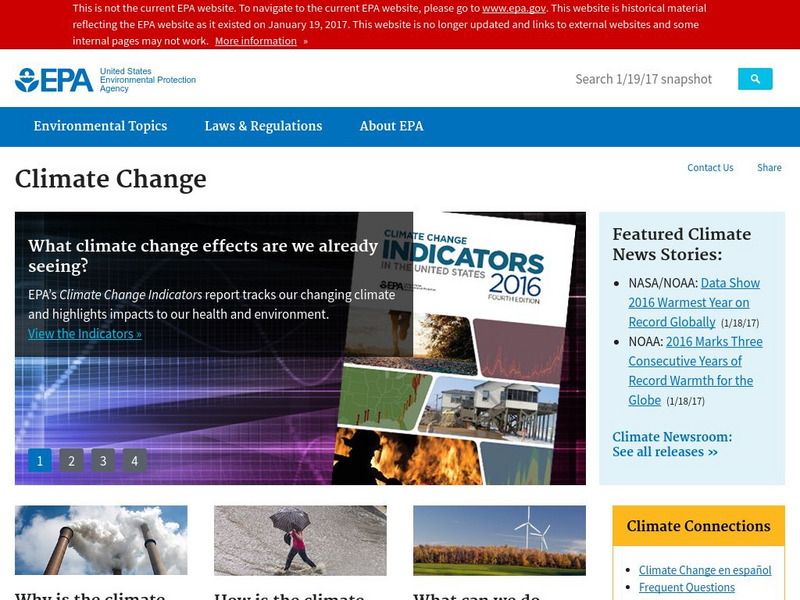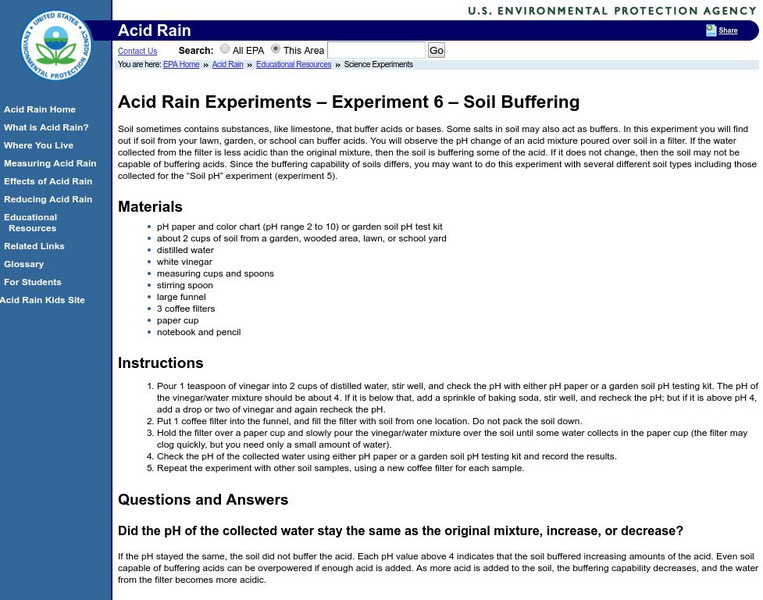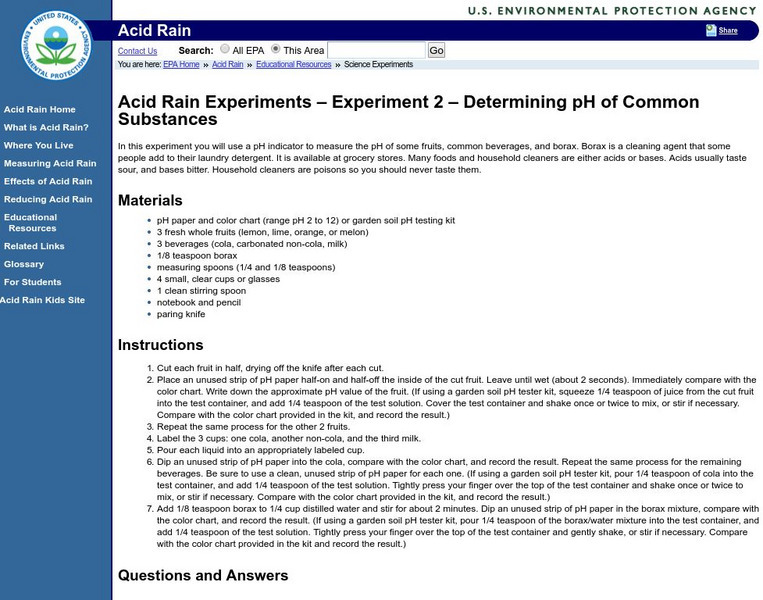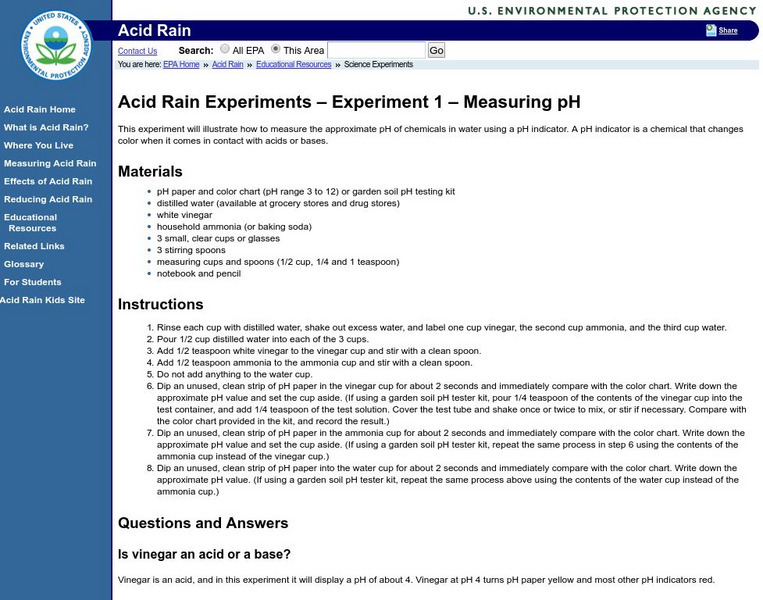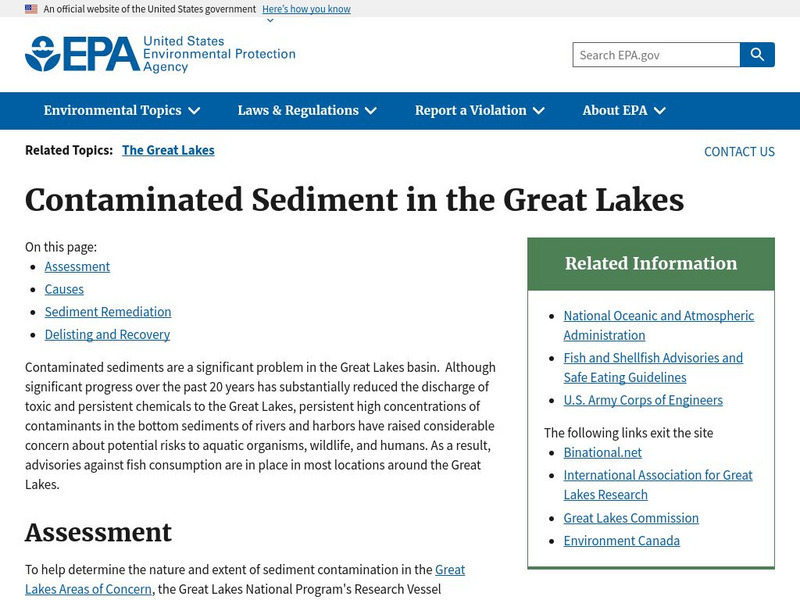US Environmental Protection Agency
Epa: Student Guide: Greenhouse Effect
Learn the science behind the greenhouse effect.
US Fish and Wildlife Service
Chlorinated Hydrocarbons (Organochlorines) Ddt
Read a brief history of the use of DDT in the United States, its effect on wildlife, and the banning of the toxin in 1972 by the EPA.
US Environmental Protection Agency
Epa: Asbestos
Discusses the different types of risks imposed when exposed to asbestos. Risks that are discussed are cancer risks, reproductive effects, and chronic effects.
Independence Hall Association
U.s. History: Environmental Reform
Environmental awareness in the United States became more focused upon the publication of Rachel Carson's Silent Spring. Read about student protests, presidential legislation, and a new desire to protect the environment.
US Environmental Protection Agency
Epa: Air Quality in My City
How does the air quality in my city compare with other cities? What time of year has the best air quality? Has the air quality in my city improved? AirCompare provides local air quality information to help you make informed,...
US Environmental Protection Agency
Epa: Carbon Monoxide (Co)
This page gives the sources of carbon monoxide along with health effects and recommendations for CO levels in homes.
US National Archives
Docsteach: Birth of the Environmental Protection Agency (Epa)
By the late 1960s, issues of unchecked land development, urban decay, and air, noise, and water pollution came to Americans' attention. In November 1971, the newly created Environmental Protection Agency (EPA) announced a large-scale...
US Environmental Protection Agency
Epa: Basic Ozone Layer Science
This site from the U.S. Environmental Protection Agency provides general information about ozone damage.
TeachEngineering
Teach Engineering: From Lake to Tap
In this activity, students will use a tutorial on the U.S. Environmental Protection Agency's website to learn about how surface water is treated to make it safe to drink.
US Environmental Protection Agency
Epa: Assessing Health Risks From Pesticides
This site provides information about the active ingredients registered as pesticides. Site discusses toxicology, exposure, dose-response and risk characterization.
US Environmental Protection Agency
Epa: Asthma and Indoor Environments
This website defines, explains, and exemplifies indoor air pollution and how it significantly contributes to asthma problems.
US Environmental Protection Agency
Epa: Mobile Source Air Toxics
Links to fact sheets, articles, and educational tools on air pollution.
Other
Air and Waste Management Association
Information and links to environmental issues. Specifically, air and waste management issues.
US Environmental Protection Agency
Epa: Climate Change
Learn all the facts and figures about climate change.
Council for Economic Education
Econ Ed Link: Clean Land Thanks to Us! (Educator Page)
In this lesson about the EPA, students will find out that their government pays for goods and services by taxing people and companies.
US Environmental Protection Agency
Epa: Measuring Soil P H
This site has an experiment to find out how to measure the pH of your soil. The soil pH is an important condition that can affect the health of plants and animals.
US Environmental Protection Agency
Epa: Soil Buffering Experiment
Use this site to explore the experimentation process of "Soil buffering."
US Environmental Protection Agency
Epa: Determining the P H of Common Substances
In this acid rain experiment the students will be "determining the pH of common substances." This is a great lesson plan for an experiment.
US Environmental Protection Agency
Epa: Making a Natural P H Indicator
At this site you will find a step by step process for making a natural pH indicator. One of the main materials you need to have on hand is a red cabbage.
US Environmental Protection Agency
Epa: Acid Rain
Explore more about acid rain. This is an online experiment to observe "The influence of acid rain on plant growth." Find out how acid rain can damage your plants directly and indirectly.
US Environmental Protection Agency
Epa: Observing Buffers in Lakes, Ponds, and Streams
Explore buffers in lakes, ponds, and streams. "In this experiment, you will observe the effects of limestone on the acidity of water."
US Environmental Protection Agency
Epa: Measuring P H Experiment
This is an activity that deals with acid rain. "This experiment will illustrate how to measure the approximate pH of chemicals in water using a pH indicator." It is easy to follow the comprehensive set of directions.
US Environmental Protection Agency
Epa: Contaminated Sediment in the Great Lakes
Provides an overview of the issue of sediment contamination in the Great Lakes, how the problem is assessed, causes of contamination, and remedial efforts. Includes links to more in-depth information.
US Environmental Protection Agency
Epa: Mercury in Your Environment
Students learn what the forms of mercury are, the sources, how to reduce the releases, and how it affects humans and the environment.









